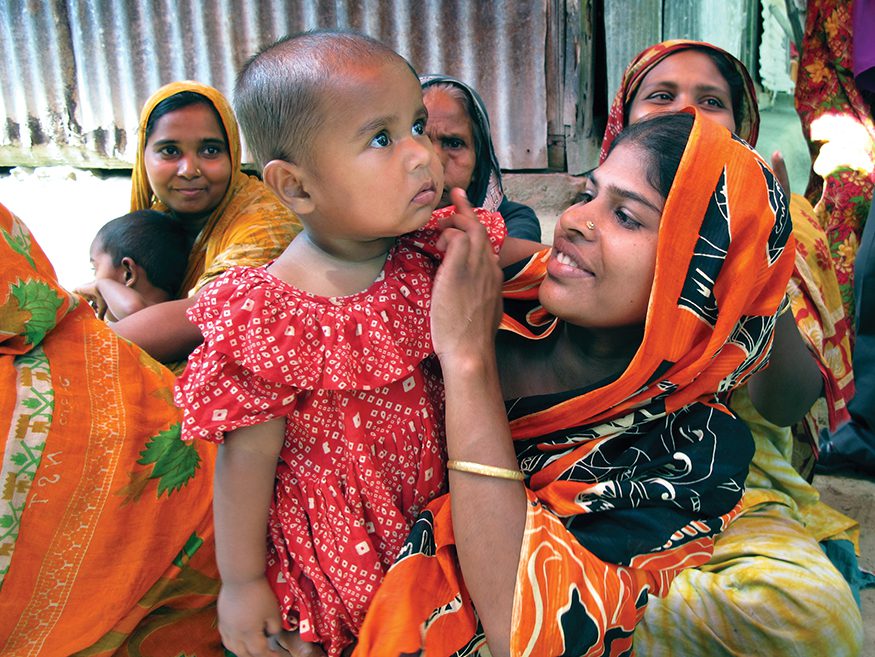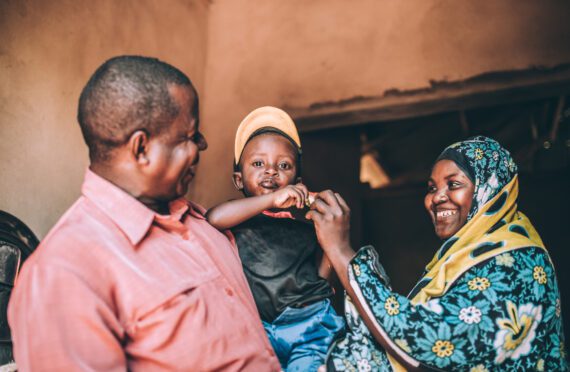The global total of people who have been forced to flee their homes is now 108.4 million and rising. The largest-ever annual increase— an additional 19 million people—took place from 2021 to 2022.
The majority of people forced from their homes remain in their own countries—62.5 million, compared with 35.5 million who are refugees in other countries. An estimated 4.4 million people are “stateless,” meaning that no country recognizes them as citizens who have the right to remain in that country.
Beginning in August 2017, hundreds of thousands of members of the Rohingya minority ethnic group fled to Bangladesh, specifically the southern region of Cox’s Bazar, from neighboring Myanmar (formerly Burma). The Rohingya population in Myanmar has been terrorized and killed indiscriminately, and the majority of survivors have fled the country. They are stateless because the government of Myanmar does not recognize them as citizens.
After an extensive investigation, U.S. Secretary of State Anthony Blinken declared on March 21, 2022, that members of the armed forces of Myanmar committed genocide and crimes against humanity against the Rohingya– only the eighth such declaration since the Holocaust.
The relative wealth of one host country versus another can make all the difference in a refugee crisis. Two situations may involve a similar number of people, and both groups may be fleeing conflict, but an emergency of severe hunger, malnutrition, and disease would likely arise in only the host country with few resources.
Bangladesh has made significant economic and social progress in recent years, but it is still among the poorest countries in the world. About 20 percent of all refugees are hosted by countries, including Bangladesh, that are part of a group designated by the U.N. as having low incomes and “fac[ing] severe structural impediments to sustainable development.”
Bangladesh is the most densely populated country in the world. It is as though half the U.S. population lived in Alabama. Its geography presents difficult and complex environmental problems. Some areas are less than seven feet above sea level, making flooding during the annual four-month monsoon season a serious problem. The saltwater left in the wake of floods can make it impossible for farmers to grow the staple crop, rice. Devastating cyclones are also a frequent occurrence.
Donor countries, including the United States, have contributed significant amounts of assistance to support those fleeing genocide and the host communities that have welcomed them. Between August 2017 and March 2022, for example, the United States contributed $1.7 billion to efforts to improve the humanitarian situation of Rohingya refugees in Bangladesh.
Nonetheless, as Bread for the World has discussed recently, budget shortfalls have forced the World Food Programme (WFP) and other humanitarian agencies to cut rations for people in need in every world region. The Rohingya refugee community suffered two successive ration cuts, in March and May 2023. Combined, the cuts reduced the food allowance from $12 a month per person to only $8.
At a June 2023 briefing hosted by Bread and InterAction, we heard from Ms. Yang Chen, NGO Platform Coordinator in Cox’s Bazar. She coordinates the efforts of more than 100 nongovernmental organizations working to help Rohingya refugees. Speaking remotely from Bangladesh, she described some of the impacts of inadequate food rations. Because refugees are not permitted to work, they have no means of making up the difference between the 9 cents per meal they receive now, following the two ration cuts, and the actual cost. Their energy and concentration are suffering. Crime has also increased, with some younger men forming gangs.
Three U.N. Special Rapporteurs—on the Right to Food; the Situation of Human Rights in Myanmar; and Extreme Poverty and Human Rights—also commented on the devastating effects of the ration cuts, imploring the international community to make up the $56 million shortfall that necessitated the cuts as soon as possible.
“In the span of three months, Rohingya refugees have seen their food rations cut by a third, further eroding the health and security of a population already suffering from severe trauma and deprivation,” the group wrote.
A lasting resolution of the Rohingya refugee and hunger crisis will depend on the actions of the government of Myanmar. At this writing, the Rohingya refugees have been in Bangladesh for nearly six years, making theirs a “protracted” refugee situation. Observers agree that they cannot return home safely at this time.
The Rohingya hunger crisis is a product of war. In my next piece, I will discuss what it might tell us about the implications of the fighting in Sudan that erupted in April 2023.
Michele Learner is managing editor, Policy and Research Institute, with Bread for the World.



